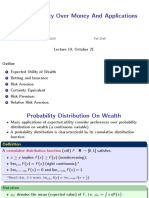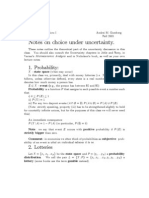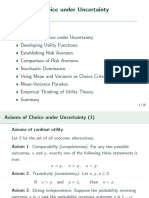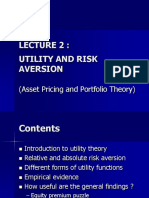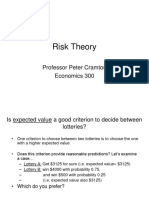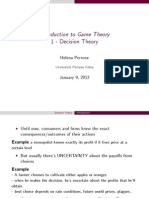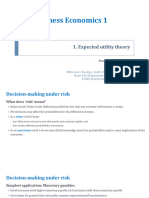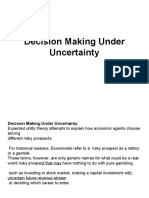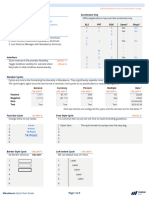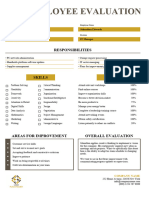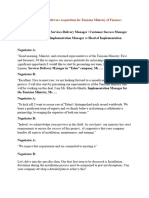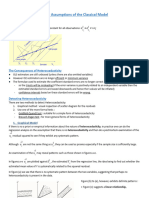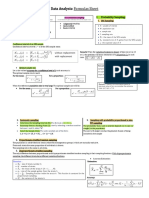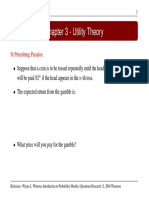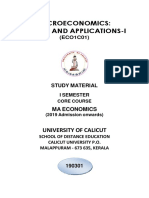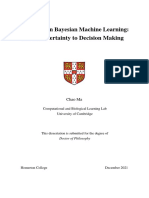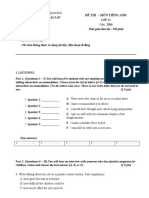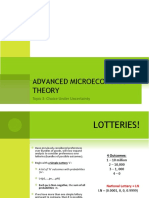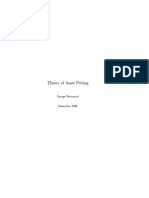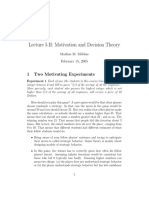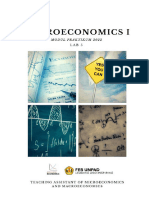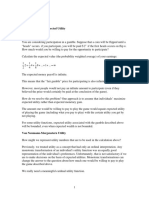0% found this document useful (0 votes)
25 views32 pagesChapter 5 Utility Function
The document discusses utility theory, which allows individuals to incorporate risk preferences into decision making. It introduces the concept of a utility function, which assigns a numerical value to outcomes based on an individual's preferences. This accounts for the fact that additional utility decreases as wealth increases. Von Neumann-Morgenstern axioms are presented to define a rational utility function. A risk-averse individual has a concave utility function, while a risk-seeking individual has a convex utility function. The shape of the utility function determines the individual's attitude toward risk.
Uploaded by
Nermine LimemeCopyright
© © All Rights Reserved
We take content rights seriously. If you suspect this is your content, claim it here.
Available Formats
Download as PDF, TXT or read online on Scribd
0% found this document useful (0 votes)
25 views32 pagesChapter 5 Utility Function
The document discusses utility theory, which allows individuals to incorporate risk preferences into decision making. It introduces the concept of a utility function, which assigns a numerical value to outcomes based on an individual's preferences. This accounts for the fact that additional utility decreases as wealth increases. Von Neumann-Morgenstern axioms are presented to define a rational utility function. A risk-averse individual has a concave utility function, while a risk-seeking individual has a convex utility function. The shape of the utility function determines the individual's attitude toward risk.
Uploaded by
Nermine LimemeCopyright
© © All Rights Reserved
We take content rights seriously. If you suspect this is your content, claim it here.
Available Formats
Download as PDF, TXT or read online on Scribd
/ 32




